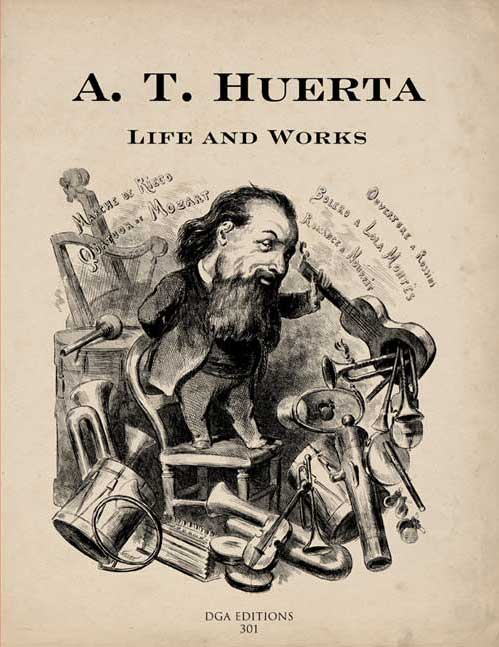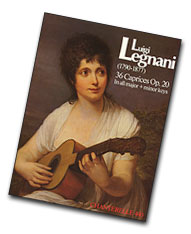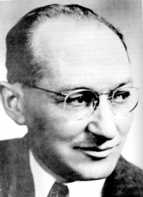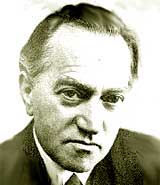 |
The Digital Guitar Archive has published an authoritative edition of Huerta titled “A. T. Huerta Life and Works”. This edition is over 180 pages, including biographical information, photos, and around 25 compositions – the entire surviving guitar works extant at time of publication. As more works may yet surface, future volumes may be forthcoming. The printing is clear, bold, and urtext – highly recommended. |
Bibliography: James Radomski, “Trinidad Huerta y Caturla: First Spanish Virtuoso Guitarist to Concertize in the United States,” Inter-American Music Review, vol. 15 (Summer-Fall 1996), no. 2, pp. 103-121.Bio from Harmonicorde.com:”Trinidad Huerta was acclaimed during his lifetime as “the Paganini of the guitar.” He was highly praised by Hector Berlioz and Victor Hugo. A music critic for La revue musicale declared that Huerta was the best guitarist he had ever heard—even while Fernando Sor and Dionisio Aguado were performing in Paris. The Allgemeine Musikalische Zeitung went further and claimed Huerta to be the greatest living guitarist. Yet Huerta is completely unknown to classical guitar audiences today. This probably resulted from a decline in his later years that brought him to die in poverty in Paris, forgotten there as well as in his native Spain.Nonetheless, Huerta’s achievements were considerable. Paris music critic Arthur Pougin (1834-1921) claimed that he wrote the “Himno de Riego,” formerly the Spanish national anthem. Huerta was the first classical guitarist to concertize in the United States (1825) and he toured Spain, Portugal, England and France, and even traveled to the Middle East with Louisa de Rothschild. Contemporary critics were astounded by his technique and simultaneously applauded and criticized his trying to make the guitar a symphonic instrument. A century before Segovia, Huerta did much to overcome the stereotype of the guitar as an inferior instrument, only useful for strumming accompaniments to parlor songs. Berlioz, in his Grand Traité d’Instrumentation, advised “If one wants to get an idea of what virtuosos are able to achieve…, the compositions of such famous guitar players as Zanni de Ferranti, Huerta, Sor, etc. should be studied.”Judging from existing opus numbers, Huerta composed at least 64 works. Most of these, unfortunately, have been lost.“Note: GFA Soundboard carried a recent article about Huerta – including evidence of Huerta’s birth date of 1800, not 1804. More details coming soon.
Ivan Klinger ( 1815 – 1897 )
– Klinger was a Russian general in the Czar’s army, and a talented composer-arranger. Most of Klinger’s pieces are written for an 8-string guitar, with 7th=D, 8th=A, and otherwise conventional 6-string tuning. All of his works from opus 1-12 are for normal 6-string guitar, with 8-string notes appearing in opus 13 when presumably the composer began using an 8-string guitar. All of the works are playable on a 6-string instrument by raising the octaves of these notes, often written as 8va. There are arrangements of Western European pieces like Schubert, as well as distinctly Russian-sounding works, somewhat in the style of Tchaikovsky or “Pictures at an Exhibition”. These are late romantic, most similar to Regondi and Coste. Klinger’s pieces are mostly intermediate to advanced, but not awkward. The fingerings are clever; they are innovative and different from the typical “Carulli patterns” found in so many pieces, and they demonstrate a thorough use and knowledge of the fingerboard. A write-up of Klinger can be found in the preface to the Regondi Ten Etudes published by Editions Orphee. It was Klinger who hand-copied the Regondi etudes, which became the sole known surviving copy of these pieces. Klinger also produced hand manuscripts of pieces by Mertz, and the famous Mertz Elegy was possibly arranged in its present form by Klinger, and indeed it shows the characteristic Drop D and Drop A notes but no other extended notes. In addition to arrangements, Klinger was a superb composer in his own right. Klinger was associated with Makaroff and the guitar society in St. Petersburg, a hub of guitar where Sor and Pettoletti among others stayed for years. Free music in printed and hand-written manuscript is available from REX, and a significant number of works in Boije.
Joseph Kuffner ( 1776 – 1856 )

Kuffner was a prolific composer and arranger for guitar, and large amounts of chamber music. Kuffner’s music is targeted toward amateur players. Having read through stacks of his material, my assessment is that the music is of mediocre, but not bad, quality.
Luigi Legnani, 1790 – 1877


Biographical Information:Legnani was a virtuoso composer, arranger, violinist, guitarist, and opera singer. Legnani ranks as one of the best and foremost virtuoso guitarist composers of the 19th century. While most of his peices had gone out of print and were almost forgotten in the mid to late 20th century, these works are beginning to be re-discovered by a new generation of guitarists and are appearing more frequently in concert programs. Thanks to the internet and the generous policies of the libraries who are stewards of these compositions, on-line free PDF access to much of the material can be found in REX and Boije. Publishers are also starting to release modern critical editions of these works (including works not found online), such as the excellent UT Orpheus editions from Italy and others.Guitarists often tell stories about Legnani and Paganini playing together in concert. I have heard this story handed down nearly every time a guitarist plays something by Legnani in concert or in master classes, and it is part of the guitar’s folklore. Professor Gazzelloni in the introduction to Chanterelle’s opus 60 publication cites a contract whereby Paganini and Legnani were to play 3 concerts together in 1836, but the contract was cancelled, and no evidence exists of a joint concert actually being performed. However, we cannot discount word of mouth handed down, and such stories often have a basis in fact. Given the evidence of the contract to perform together, obviously they must have played together at some point, as it is very likely that other contracts existed but were lost, or perhaps private performances were given. Lack of documentation is not proof that something did not occur.Legnani was very involved with luthiers, as evidenced by the “Luigi Legnani” models by Staufer and Ries, and an instrument claimed to be his own guitar (see the Builders page). Professor Gazzelloni also states that Legnani retired to Ravenna around 1850 and made stringed instruments including guitars and violins.There appears to be two phases of Legnani’s publishing career. The first phase produced opus works 1-87, and the second phase started anew with opus 201.A portion of Legnani’s compositions are lost based on gaps in opus numbers. Perhaps they are among the works without opus numbers but remain to be identified, or perhaps they are buried in private collections or a library, or perhaps they have completely disappeared. It is possible that some of the missing opus numbers include vocal works. The missing works in the first phase are opus numbers: 9, 13-15, 17, 33, 35-39, 41-59, 65-86. Thus 38 works have been found, and 49 works are missing; overall this is 44% found and 56% missing.During phase 2, the opus number gaps are: 205-221, 225-236, 239-249. Only 9 works survive in phase 2 (op. 201-250) – an 18% survival rate.There are claims that the opus numbers between 100 – 200 are lost. It is my strong belief that Legnani did not publish any works with opus numbers from 100-200. No opus number between 100-200 has surfaced in any collection, publication, catalog reference, or library to my knowledge. It is statistically improbable that over 100 works in a row could be lost, based on 44% found between 1-87, and 18% found between 201-250. I do not know the reason for this gap. We can only speculate at the reasons: perhaps there were publishing issues and a clean break was needed to distinguish the numberings, or perhaps Legnani took a long break from publishing and wanted to cleanly distinguish the old from the new. It appears there is a gap in time; for example op. 60 dates to ~ 1829, op. 64 to ~ 1832, while opus 222 is estimated at 1846.The 36 Caprices (op. 20) are the most widely available and well-known. Although musically superb, these pieces were technical etudes along the lines of Pagani’s caprices. Most of Legnani’s other music is superb, and should be given a closer look. Some publishers, such as UT Orpheus, Ricordi, and Araniti Editions have published a few pieces. I am always trying to get my hands on as much as possible, and a new modern complete works edition is long overdue.There are no known portraits of Legnani known to have survived. If anyone has one, please email me.See also The Italian Guitar in the 19th-Century: Sixty biographies – Sixty biographies of Italian guitarist composers of Nineteenth century in alphabetic order (edited by Marco Bazzotti).Biographical notes by George C. Krick.Difficulty Level and Scope:Legnani wrote mostly for solo guitar, with some output for other instruments such as flute and guitar. As was common practice, Legnani composed mostly arrangements or fantasies of operas or folk songs, in addition to a few original themes, and many theme & variation pieces. Operatic music, particularly Italian opera such as Rossini, comprises much of his output.In addition to the solo guitar, and guitar & flute works, Professor Gazzelloni cites the existence of vocal works and “a concerto for guitar and orchestra of which only the guitar part has survived” (Chanterelle op. 60 introduction).The compositional quality of Legnani’s output varies. The best of his works are gems of the repertoire. Difficulty levels vary considerably. Other works can be a bit tedious, and emphasize flash over substance, being obtusely difficult. I have read through nearly all of Legnani’s surviving solo guitar works several times, and selected my recommendations below. This is purely editorial.Certain trademark techniques are found in several pieces. One of them is holding the barre at the 9th fret and 10th fret, playing fast notes in patterns from the 9th to 12th frets (for example as in op. 19, 32.) – here you pull down the elbow a bit. Arpeggios were a common feature. It is often said that Giuliani is known for the octave passages – I would say Legnani uses them even more so. Patterns: as with many guitar composers, Legnani used clever patterns to get the most sound from the guitar and to impressive effect, making it sound harder than it is. Recitivo / ad lib: these are borrowed from operas, where in dramatic sections of the opera, the singer is solo and gives more of a recital than a melody, which Legnani mimics on the guitar. Where marked ad lib, it means literally at liberty: the tempo can be varied, stopping and starting, varying the tone and punctuation, and generally improvising the delivery. It is possible that the performer of the era would give an extended improvised cadenza here.Legnani did not write much easy music for beginners. The Etudes are challenging pieces, very advanced, and comparable to the Paganini violin etudes, which are commonly performed in concert programs by virtuoso concert artists today. Given the difficulty level of many of Legnani’s concert pieces, he must have been an amazing performer of remarkable ability. Written accounts of Legnani from Vienna indicate that even in a city accustomed to such virtuosos as Giuliani, Legnani dazzled his audiences. Today, selected pieces by Legnani are often chosen by performing concert artists to showcase their ability and dazzle audiences. That being said, not all his music is impossible to play, though much of it requires the technique of Eliot Fisk and is certainly beyond my ability or that of most amateurs. Several pieces are accessible, with effort and practice, to advanced amateur players. Other pieces are beyond the ability of most intermediate players. A nice set of 3 pieces with intermediate technique requirements is the “Tre Balli Nazionali” or “3 National Dances” available from REX. Even though many pieces may be difficult, they are high quality compositions and well worth the effort to study. They are not difficult just for the sake of being difficult, but rather because the composer held high standards for the guitar and demanded the execution and skill of a classically trained violinist or pianist.







